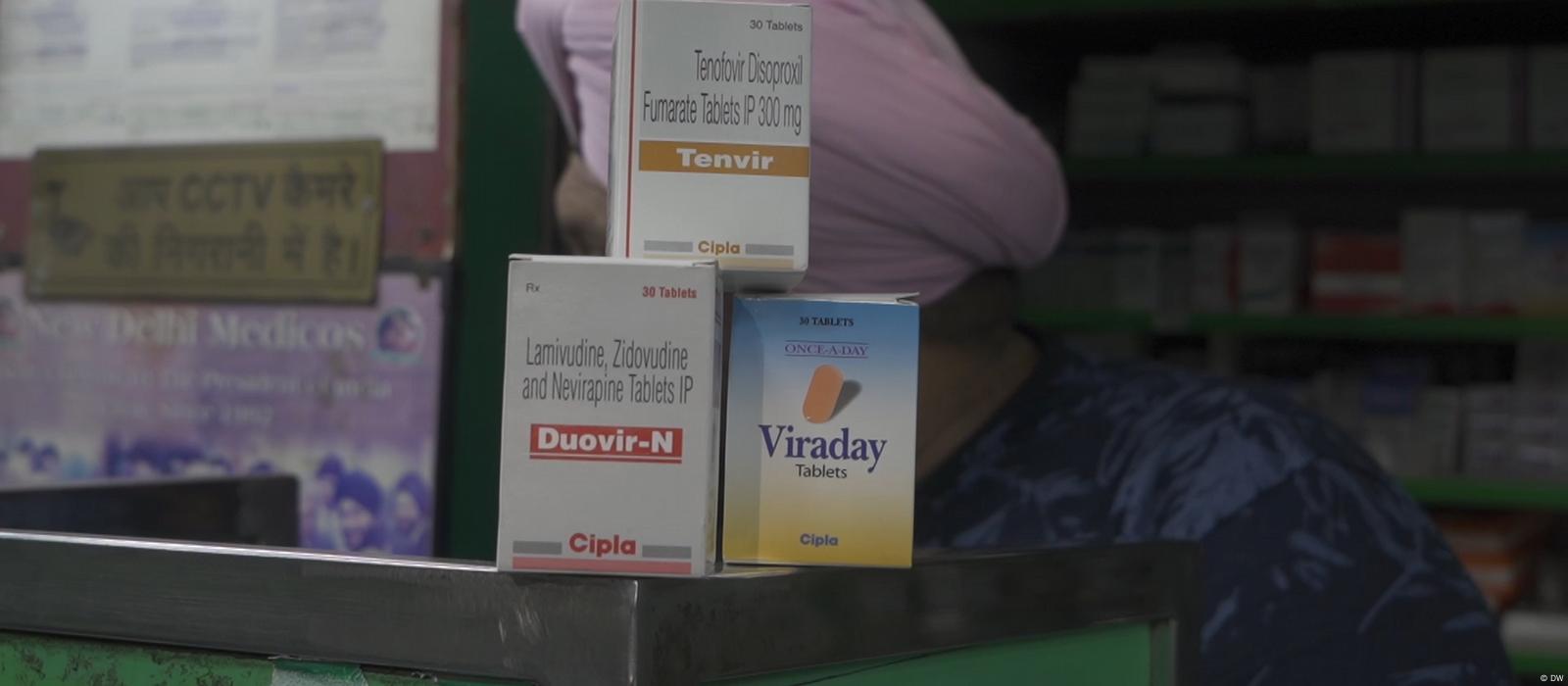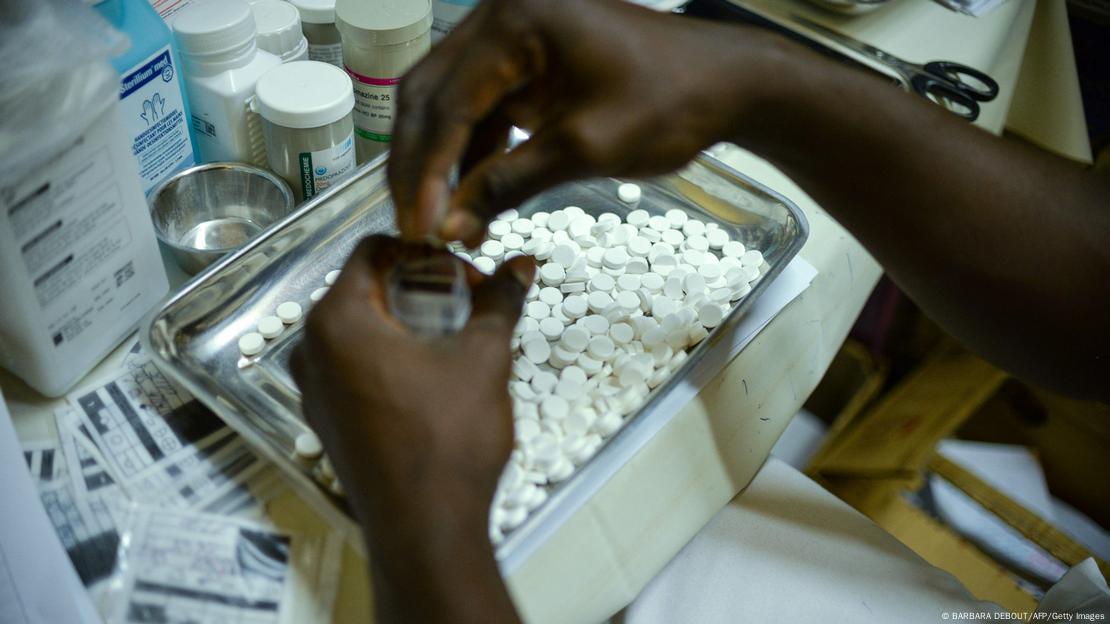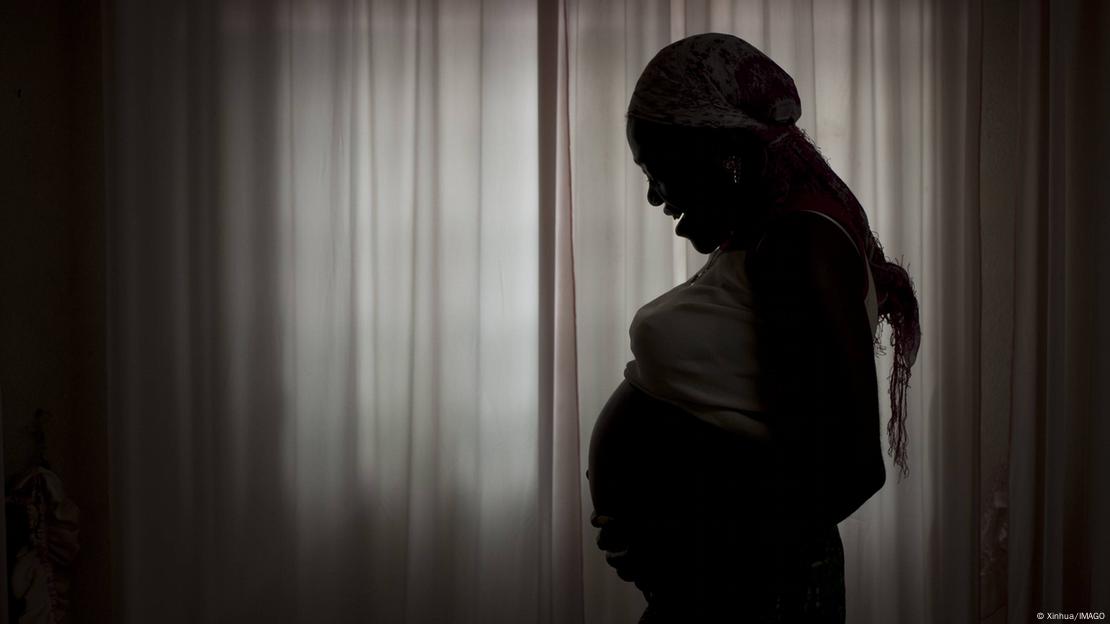HIV treatment still undermined by stigma in some areas
Drugs have been developed against HIV but stigma is still high and, in some areas of the world, it is hindering prevention strategies.

An HIV diagnosis doesn't carry the death sentence it once brought. Over the past 30 years, enormous improvements have been made in medicine's ability to treat patients. For most people across the world, drugs are available for free.
Now, people treated for HIV can live normal, productive and healthy lives — those who take medication can have sex without worrying about infecting their partner. Doctors who treat the virus told DW that the recent news about Johnson and Johnson's failed vaccine trial was therefore disappointing, but not the end of the world.
The US pharmaceutical firm stopped phase 3 trials on a highly sought-after HIV vaccine in January after results found that the jab was ineffective at preventing infection.
Still, despite these improvements, HIV cases aren't falling as quickly as desired and are actually increasing in some parts of the world. A UN report released last summer reported that more than 1.5 million people had become infected with HIV in 2021, around three times the global target.
Of the 38 million people infected with the virus, around 73% were under treatment, and around 15% didn't know they had it, the report said. It gave pandemic-related funding cuts to global HIV and AIDS prevention programs as one reason for the 2021 stagnation but that doesn't tell the whole story.

Why are numbers continuing to rise in some areas?
Experts say that the first step in preventing the spread of HIV is knowing whether you have it.
But sometimes people avoid testing out of fear of judgment. Certain homophobic, moralistic public health campaigns that emerged in the 1980s in response to the AIDS crisis are still deeply ingrained in people's perceptions of the virus across the globe.
"People don't want to get tested and don't want to go to the treatment center if they are going to be stigmatized and then afterwards, discriminated against,” said Josip Begovac, a physician who specializes in treating HIV in Croatia.
Begovac said this is why "integrated" clinics specializing in testing for all kinds of sexually transmitted diseases that are less stigmatized — such as syphilis, gonorrhea and chlamydia — are generally more successful at reaching those at risk for HIV.
Treatment is available for free in Croatia for anyone who seeks it and has insurance. But it is not available to people who do not have insurance, such as undocumented migrants, Begovac said. And there is only one HIV treatment center in Croatia, so some have to travel long distances — for up to four or five hours — to access care.
Access to treatment, but lost home and work
Herbary Cheung, a social science professor in Hong Kong who has studied HIV stigma among single mothers in Thailand, also said HIV care required long travel for people living in rural remote areas. In some Thai provinces, it can take up to a day to get to a facility that treats the condition.
Once a woman arrives at a center that treats HIV, medication is cheap and available, Cheung said. But treatment is just one part of the struggle. If that woman comes from a tight-knit rural area, news of her positive status can spread fast among family and community members. Some of the women Cheung spoke with, who worked in restaurants or massage parlors, had been forced to leave their jobs after their bosses heard about their HIV status.
Religion also impacts how HIV is perceived in Thailand — in the Buddhist tradition, the virus is often seen as bad karma, a sign of bad actions in a past life.
This stigmatization caused some of Cheung's interview partners to uproot their lives in their small villages to larger metropolitan areas after receiving an HIV diagnosis. There, he said, the women were more anonymous and also had better access to care and emoployment.
Despite the fact that HIV rates are similar in men and women in Thailand, Cheung said, it is often stereotypically considered a "woman's disease" because the first reported case of the virus, in 1984, was spread from a Western man who had sex with a Thai female sex worker.
Children's HIV status reflects on the family
Cyrus Mugo is a researcher studying HIV stigma in young people in Kenya, where the virus is endemic. He said that in his country, somebody's HIV status could impair access to education.
Kenya has had access to life-saving HIV drugs since around 2016, he said. But even if people have those drugs, the HIV label often causes families to abstain from sending their HIV-positive kids to the country's popular boarding schools, where school authorities are certain to find out about their positive status.
"Parents will say, ‘I do not want my child to go to boarding school because they'll be asked about the HIV status',” said Mugo. "It's not just about the child. When you talk about a child's HIV status, you're actually talking about the HIV status of the family, because there's a chance that they got it from the mom.”
According to UNICEF, in 2020, children accounted for 35% of new HIV infections in Kenya.

Lackluster PrEP uptake also result of stigma
Mugo said he also thinks stigma plays a big role in Kenya's struggles with uptake of PrEP, a preventative medication for at-risk groups that, if taken correctly, can reduce a person's chances of getting the virus through sex by up to 99%.
"Uptake is not as good as we'd want it to be,” he said. "We were hoping we could reach as many high-risk people as we could, but we've not been able to reach those high levels… People are wary about taking pills for prevention. You know, taking medicine to prevent yourself from getting sick is not the same as taking medicine because you're sick.”
He said this wariness, plus concern about what others might think, deters people from using the medication.
"You're taking PrEP and so someone might misconstrue it to mean that you're HIV infected,” he said. "Or you're taking PrEP and so you must have loose morals — that's the other thing that's associated with PrEP and even use of condoms. They think that your sexual activity is all over the place and that's why you need it.”
Mugo said there are lots of factors that play a role in people's disinterest in PrEP, but that it ultimately comes down to fear of judgment from others.
"Stigma, I think, is the heartbeat of it,” he said.
How HIV is treated
The treatment for HIV is a combination of drugs taken daily called antiretroviral therapy (ART). ART was first introduced in many developed countries in the mid-1990s, but only became available in developing countries around 2003, when international funding lowered distribution costs.
The treatment has been very successful at lowering HIV mortality rates — HIV patients on treatment currently have the same mortality rates as those who don't have HIV. However, researchers say a daily pill is inconvenient, and a longer acting treatment would be easier for people to take. These are in the pipeline and available in some Western countries, but not everywhere.
Another preventative treatment is the aforementioned PrEP, a daily oral medication that is highly effective if taken correctly. But only some of the world's countries have access to the drugs, and those that do might have trouble with uptake for some of the reasons Mugo explained in Kenya.
Knowing the facts about HIV helps fight it
Source: DW







